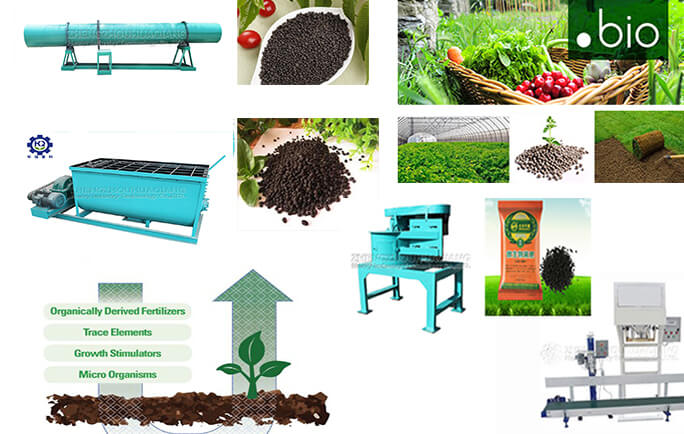The organic fertilizer production line plays a significant role in promoting agricultural development. One needs organic fertilizer, and the other needs to solve the problem of livestock and poultry manure. Organic fertilizer equipment cleverly connects the two, processing organic fertilizer by processing livestock and poultry manure, while also helping to restore natural ecological balance in the soil.
Four major advantages of using organic fertilizer production lines:
1. Beneficial to human health and well-being.
Untreated livestock and poultry feces have high levels of sulfur, ammonia, and other substances, which breed mosquitoes, flies, and transmit various diseases. After disposal on the organic fertilizer production line, it has a corresponding preventive effect on human life and health.
2. Reduce the pollution of livestock manure to the environment..jpg)
With the assistance of organic fertilizer equipment, chicken manure from chicken farms can be cleaned and transported at any time. Fresh chicken manure is disposed of through a series of organic fertilizer production lines such as a pile flipper, semi wet material grinder, mixer, and dryer. The disposed chicken manure is used to remove the odor; Secondly, it completely eradicated various pathogenic bacteria, insect eggs, grass seeds, etc. in chicken manure; The third is to remove harmless substances from chicken manure, residues of chicken medication, and avian influenza virus. In this way, the maximum limit increases the purification of air and the transmission of hazards and losses to the environment, humans, animals, and animals.
3. Increase farmers’ income and solve the employment problem of affluent labor force.
The inorganic fertilizer produced by organic fertilizer equipment has caused changes in the quality of agricultural products, improved yields, and brought higher benefits to farmers. It has also dealt with local unemployment and slowed down the pace of farmers’ prosperity and pursuit of a moderately prosperous life in China. China continuously advocates for green food, pollution-free food, and inorganic food, encouraging green environmental protection. The emergence of organic fertilizer production lines provides fundamental guarantees for such food in China.
4. Beneficial to the export of agricultural products and foreign exchange earnings.
Due to the various export targets of agricultural commodities exceeding the standard, which indirectly affects China’s export of agricultural commodities to earn foreign exchange, it is urgent to produce high-quality agricultural commodities and strengthen international market competitiveness. The biological organic fertilizers produced by organic fertilizer production lines are of great significance in changing the unfavorable situation faced by China’s agricultural commodity exports.
The development of production lines and disinfection systems for organic fertilizer equipment for livestock and poultry manure, as well as the resource utilization of harmless treatment of livestock and poultry manure, will be conducive to promoting enterprise management, forming an industrial chain, achieving industrialization, marketization, and scaling, effectively promoting the development of ecological agriculture and circular economy.
.jpg)
.jpg)

.jpg)
.jpg)
.jpg)

.jpg)
